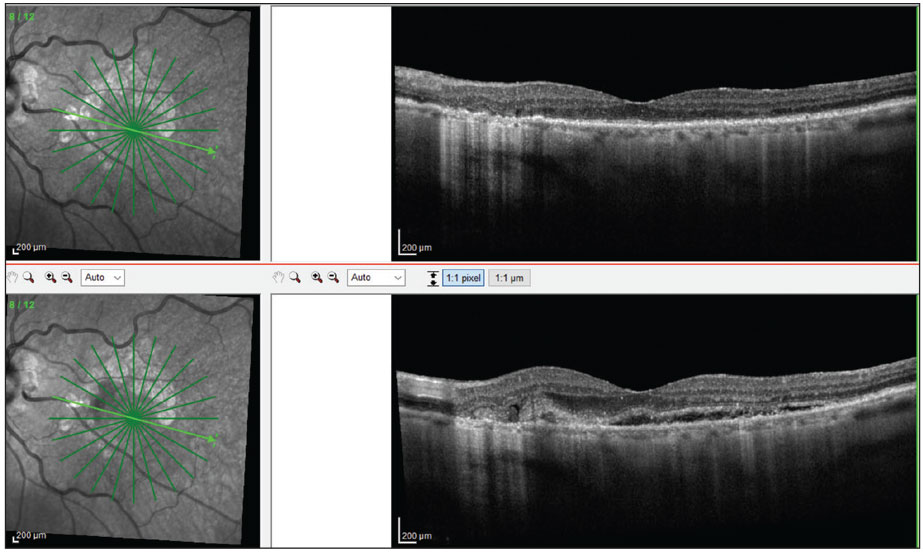 |
| Patients with wet AMD in one eye and dry AMD in the other have a greater chance of conversion to bilateral wet AMD. Photo: Jessica Haynes, OD. |
The percentage of dry age-related macular degeneration (AMD) cases that progress to wet AMD is quite low, but it’s worth investigating factors that characterize conversion due to the serious vision loss that can occur. A recent study, to be presented this afternoon at the ARVO 2022 conference in Denver, examined conversion rates from dry to wet AMD across different patient populations using data from the American Academy of Ophthalmology’s IRIS Registry.
A total of 2,664,789 patients with dry AMD in at least one eye were included. The characteristics observed included age, sex, race, geographic region, smoking status, dry and wet AMD stage and conversion time.
The study found that females, white patients and smokers had a higher risk of conversion from dry to wet AMD. Overall conversion rates were 2%, 6.1% and 6.7% for patients in the early, intermediate and advanced stages of dry AMD, respectively. There was decreased risk for males compared with females and Asian and African-American patients compared with white patients. Relative to patients with bilateral dry AMD, those with wet AMD in one eye and dry AMD in the other and those with unilateral dry AMD had a higher risk of conversion in the eye with dry AMD. Relative to patients with early dry AMD, those with intermediate and advanced dry AMD had a higher risk of conversion.
The team concluded that patients with wet AMD with inactive choroidal neovascularization or an inactive scar had a lower risk of conversion to wet AMD in the fellow eye.
Original abstract content © Association for Research in Vision and Ophthalmology 2022.
Ross C, Gong D, Hall N, et al. Conversion rates from non-exudative to exudative age-related macular degeneration: an AAO IRIS Registry analysis. ARVO 2022 annual meeting. |


